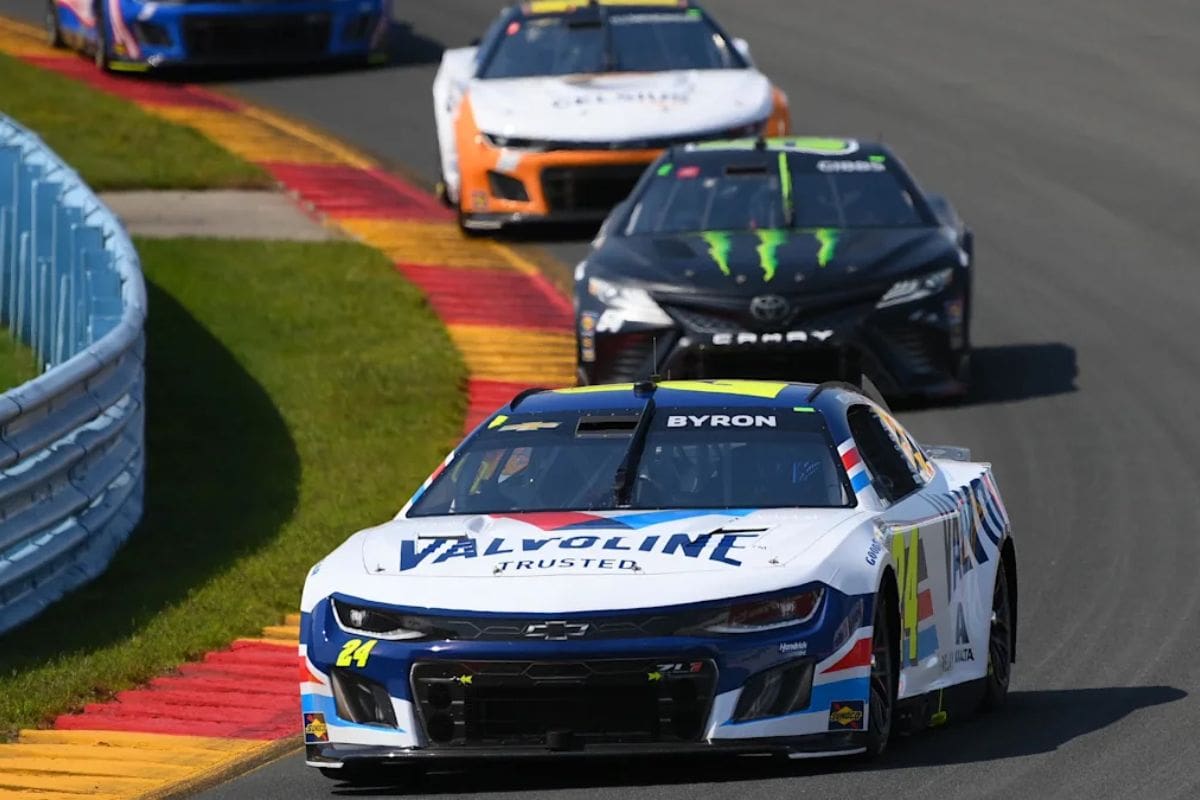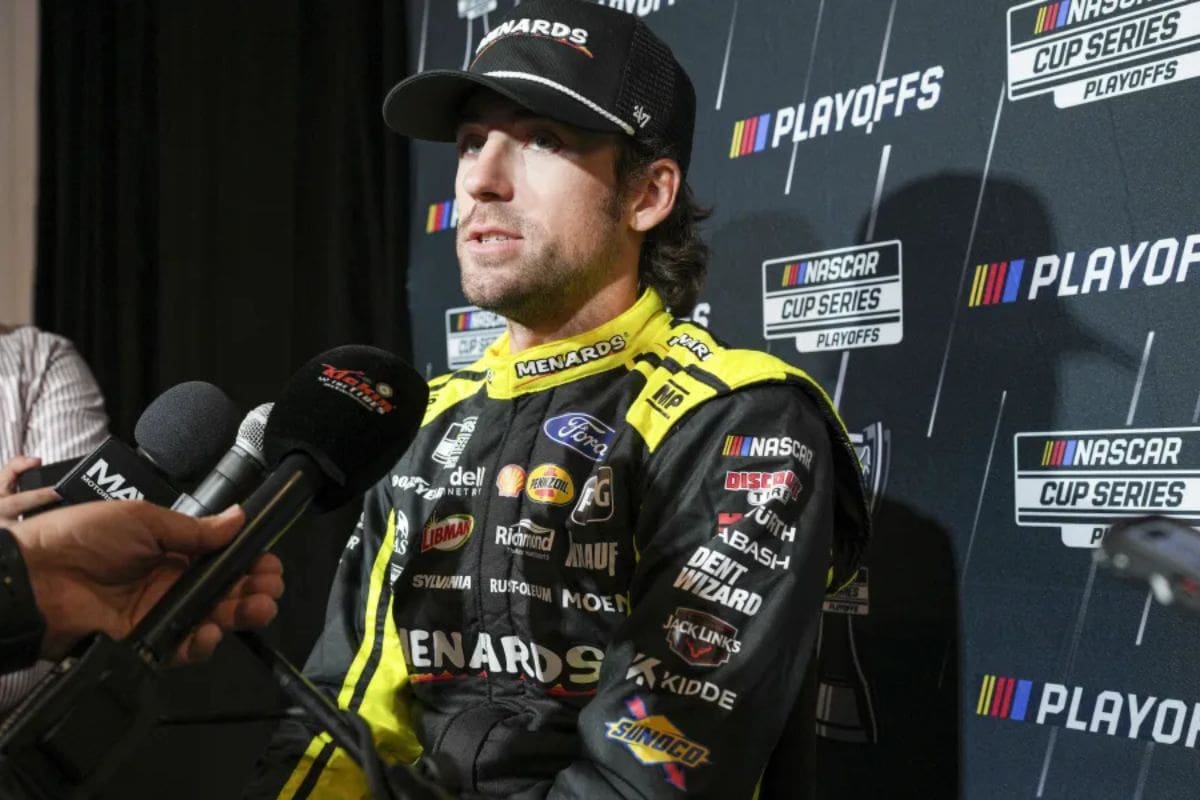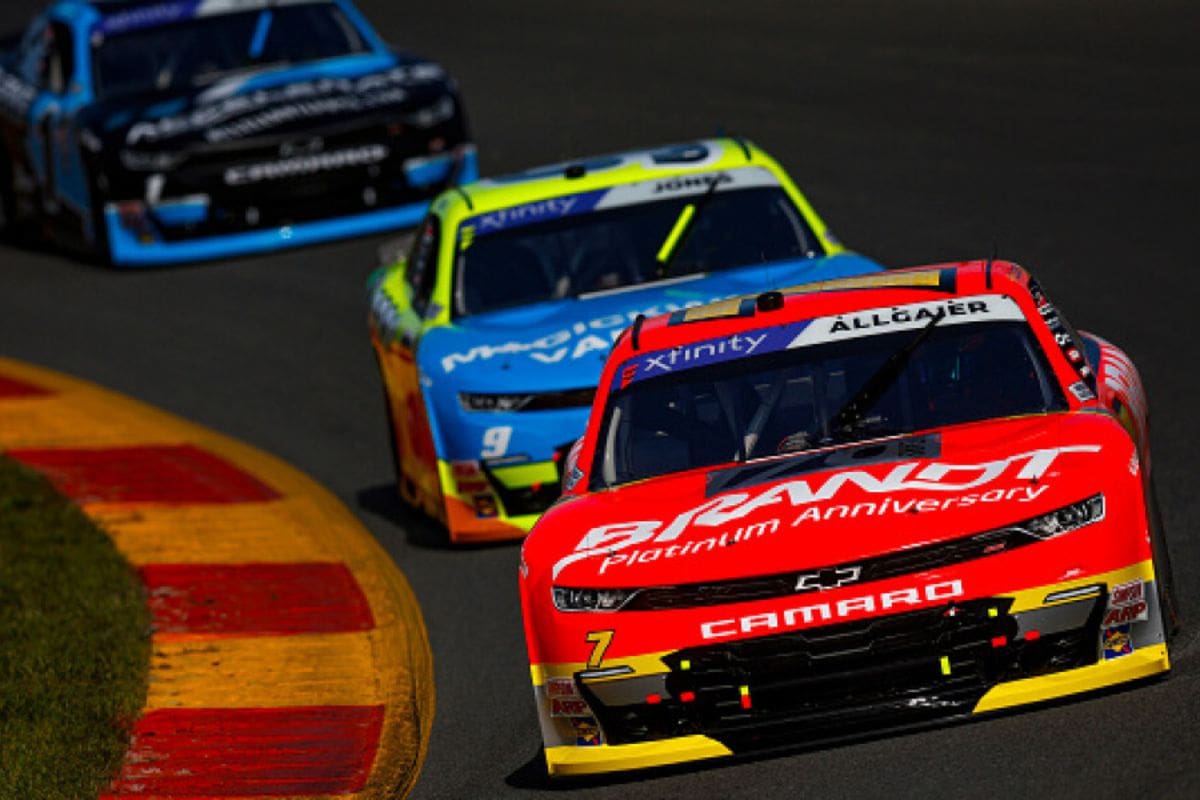NASCAR’s Harsh Rulebook Ruins Ryan Blaney’s Race: The recent uproar surrounding Ryan Blaney‘s premature exit from the race highlights a growing discontent with NASCAR’s stringent regulations, particularly the Damaged Vehicle Policy. Fans and analysts similarly are questioning whether such rules serve to protect the integrity of the sport or stifle competitive spirit. Blaney’s situation raises critical concerns about the balance between safety and fairness, prompting a broader discussion on how NASCAR can adapt its policies to reflect the evolving landscape of racing. As the debate intensifies, one must consider what changes might be necessary to improve the experience for both drivers and fans similarly.
Key Highlights
- Ryan Blaney’s race ended early due to a pileup initiated by Corey LaJoie’s miscalculation, highlighting risks of aggressive driving.
- The strict application of NASCAR’s Damaged Vehicle Policy sidelined Blaney, despite his readiness to continue racing.
- Fans rallied behind Blaney, expressing frustration over the perceived injustice of NASCAR’s rules and their impact on his race.
- Critics argue that NASCAR’s inflexible rulebook needs modernization to better reflect contemporary racing dynamics and enhance competitive integrity.
- The Damaged Vehicle Policy, adopted in 2017, limits repair time, often leaving teams unable to address significant damage effectively.
Opening Lap Chaos
Experiencing the tumult of the opening lap at a NASCAR race can set the tone for the entire event, and this particular race was no exception. The chaos unfolded rapidly, showcasing the delicate balance between aggression and control that defines the sport. Corey LaJoie’s unfortunate miscalculation when he clipped Kyle Busch initiated a chain reaction, resulting in Busch spinning and colliding with multiple contenders, including Denny Hamlin, Ryan Blaney, Christopher Bell, and Brad Keselowski.
This incident not only disrupted the race but also exemplified how quickly fortunes can change in NASCAR. The opening lap is often characterized by heightened tension as drivers jostle for position, but this race clearly demonstrated the inherent risks involved. The pileup highlighted the fragility of race strategies, as skilled drivers found themselves mere victims of circumstance.
For Ryan Blaney, the ramifications were particularly acute; his early exit signaled not just a personal loss but also raised questions about the efficacy of NASCAR’s rules. Under the Damaged Vehicle Policy, a car that must return to the garage cannot continue racing, limiting opportunities for recovery.
This regulation emphasizes a broader conversation about the balance between maintaining competitive integrity and allowing drivers the chance to rebound from misfortunes. As spectators witnessed the aftermath of the opening lap chaos, it was clear that the stakes extended beyond individual races, accentuating the need for ongoing dialogue about the rules that govern this sport.
Ryan Blaney’s Disappointment
Ryan Blaney’s hopes were dashed almost immediately as the chaos of the opening lap unfolded, leaving him to grapple with the harsh realities of NASCAR’s rules. As the defending champion, he entered the race with confidence, only to watch his aspirations evaporate due to circumstances beyond his control. The disheartening aspect was that his car did not cause the wrecks; rather, he became an innocent victim of the chaotic environment.
Blaney’s disappointment was palpable as he was forced to retire to the garage, his frustration evident in his remarks to NASCAR officials. He articulated a desire for a fair opportunity to assess and potentially rectify the damage, emphasizing that the evaluation of the situation was incomplete.
NASCAR allows for towing and remaining in race for mechanical issue but not damage. pic.twitter.com/1Bp9pv8YAL
— Bob Pockrass (@bobpockrass) September 15, 2024
His sentiments can be distilled into three key points:
- Lack of Communication: Blaney expressed confusion over the decision-making process, highlighting a disconnect between the drivers and governing body.
- Injustice of the Rules: The immediacy of the penalty felt disproportionate, especially given that he was not the instigator of the incident.
- Frustration at Limited Agency: The inability to repair his vehicle highlighted a feeling of helplessness, stripping him of the agency to compete.
Fans Rally Behind Blaney
The disappointment that Ryan Blaney faced resonated deeply with fans, prompting a wave of support as they rallied behind him following his premature exit from the race. Blaney’s readiness to continue was overshadowed by the stringent application of NASCAR’s Damaged Vehicle Policy (DVP), which ultimately sidelined him despite his competitive spirit. This incident ignited a fervent discussion among fans, many of whom were invested in Blaney’s path toward securing a third consecutive championship.
As images outlining the DVP circulated, they served as a catalyst for an outpouring of commentary on social media platforms. Fans articulated their frustration, with one particularly summarizing the sentiment: “Well, NASCAR screwed Blaney big.” Such remarks highlight a collective discontent with the perceived rigidity of NASCAR’s rules.
Supporters of Blaney not only empathize with his unfortunate situation but also call into question the fairness and integrity of race regulations that can abruptly alter a driver’s fate. This incident has galvanized a community of fans who see in Blaney not just a skilled driver but a symbol of resilience in the face of bureaucratic limitations.
“The rulebook needs a rewrite.” – fans’ reaction
The desire for change is palpable, as fans advocate for a reevaluation of the DVP, hoping to guarantee that talent and resolve prevail over procedural constraints. The support for Blaney transcends mere fandom; it reflects a broader yearning for a more equitable racing environment, where rules serve the spirit of competition rather than stifle it.
Criticism of NASCAR’s Rulebook
NASCAR’s rulebook has faced considerable scrutiny, particularly following recent events that highlighted its inflexibility. Fans and analysts similarly have voiced concerns over the rigidity of the regulations, arguing that they do not align with the dynamic nature of contemporary racing. This dissatisfaction was particularly evident in the aftermath of Ryan Blaney’s race, where many felt that NASCAR’s stringent rules undermined the spirit of competition.
I’d like to know why, though. If it can safely be fixed, the team deserves that chance.”
“The DVP policy is an absolute joke.” – fans reaction
The calls for reform center around several key points:
- Need for Modernization: Fans contend that the rulebook requires a thorough rewrite to better reflect the evolving landscape of motorsport. This includes adapting policies that resonate with the expectations of today’s audience.
- Empowerment of Teams: Many supporters argue that teams should be afforded the opportunity to rectify issues with their vehicles during races, provided such fixes can be executed safely. Allowing for minor modifications could improve the competitive edge and increase the excitement of the event.
- Minimized Interference: There is a growing sentiment that less intervention from NASCAR would lead to a more authentic and fair racing experience. This approach would resemble the philosophy of referees in multiple sports, who work to allow the game to flow without unnecessary interruptions.
DVP and Its Impact
Adopted in 2017, NASCAR’s Damaged Vehicle Policy (DVP) has remarkably reshaped the competitive landscape by imposing strict limitations on how teams can address repairs during races. This policy mandates that teams have a mere six minutes on pit road to effect repairs, a timeframe that often proves insufficient for addressing considerable damage. If a vehicle requires more extensive repairs, it faces disqualification, thereby removing any opportunity for teams to salvage their performance in the race.
The implications of the DVP extend beyond just immediate race outcomes; they fundamentally alter tactical considerations for teams. For instance, mechanical issues that are not accident-related are exempt from the time constraint, allowing teams to focus on safety without the strain of an impending disqualification.
However, this exemption does not alleviate the burden placed on teams facing accident-related damage, as was the case for Ryan Blaney, AJ Allmendinger, and Ricky Stenhouse Jr. in their recent race. Despite Blaney’s strong position above the elimination line, his inability to score points due to the DVP highlights its critical nature.
“So Allmendinger should not be allowed to continue.” – fans’ reaction
The policy fuels ongoing debates among fans and analysts regarding the balance between competitive integrity and the spirit of the sport. Critics argue that the DVP can lead to unjust outcomes, particularly when a driver’s performance is curtailed by circumstances beyond their control.
As NASCAR continues to evolve, the DVP stands as a contentious element that demands scrutiny and potential reevaluation to guarantee it aligns with the sport’s foundational ethos.
News in Brief: NASCAR’s Harsh Rulebook Ruins Ryan Blaney’s Race
The incident involving Ryan Blaney and the ensuing fan backlash highlights the urgent need for NASCAR to reassess its Damaged Vehicle Policy. As competitive dynamics evolve, regulations must adapt to guarantee that they foster rather than inhibit fair competition. A reevaluation of the rulebook could improve the integrity of the sport and better reflect the spirit of racing, ultimately benefiting both drivers and fans similarly. Addressing these concerns may lead to a more equitable and thrilling racing experience.
ALSO READ: Ryan Blaney on NASCAR’s Unmatched Fan Access and Why the NBA and NFL Are Missing Out



